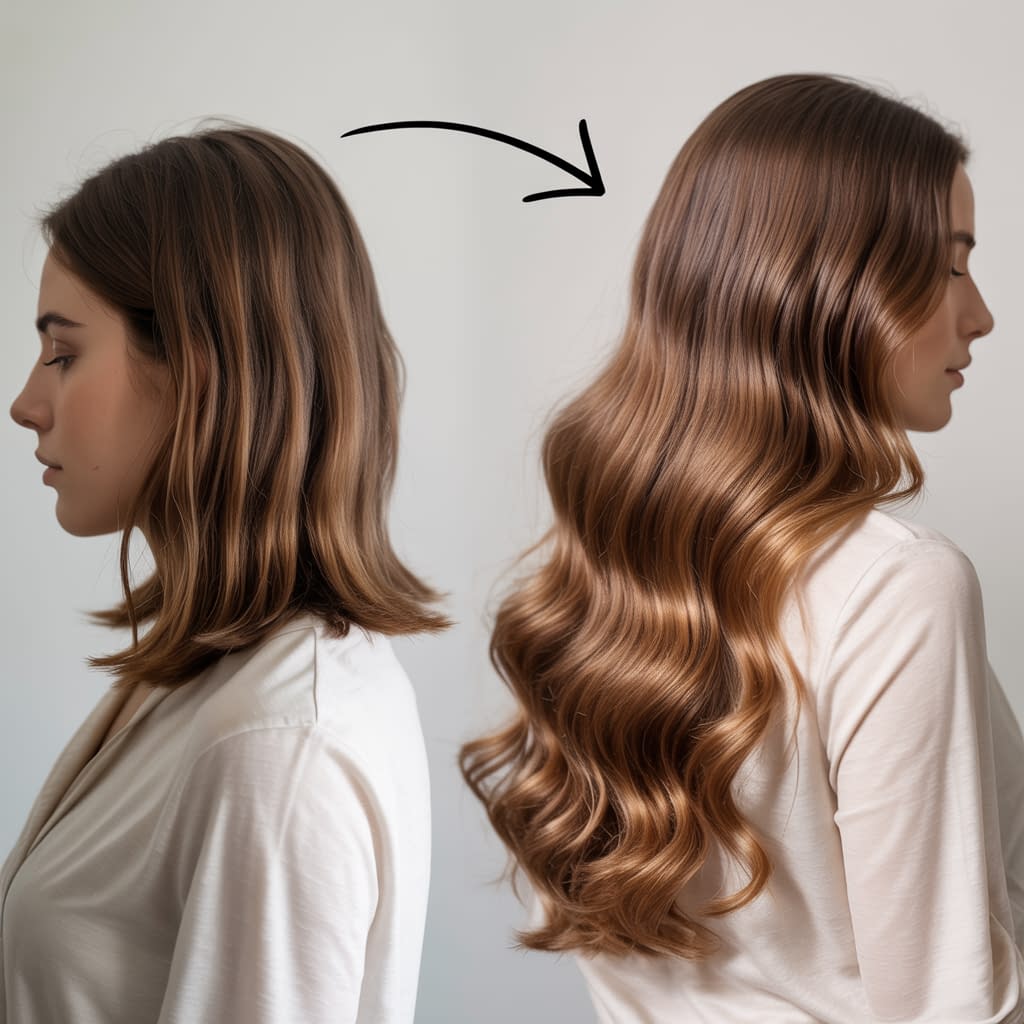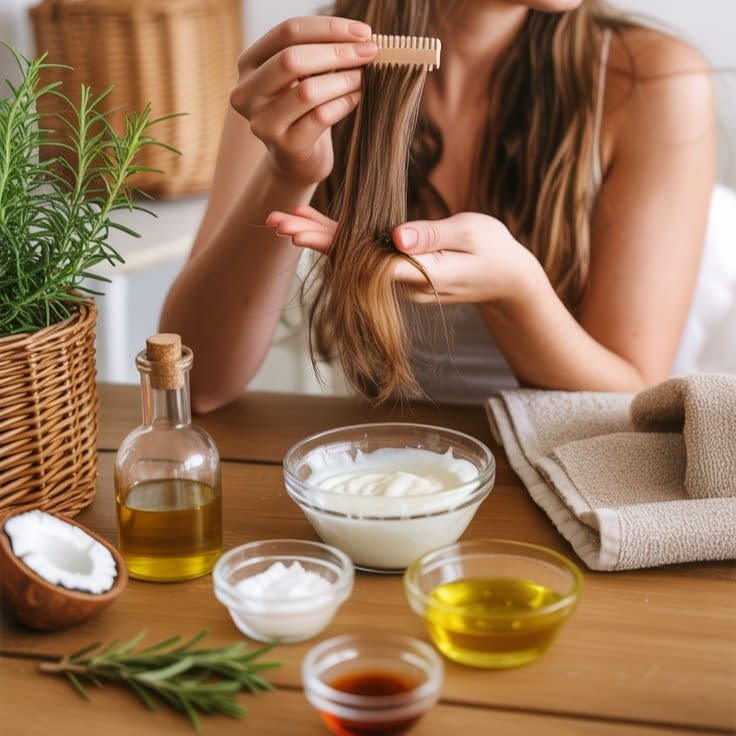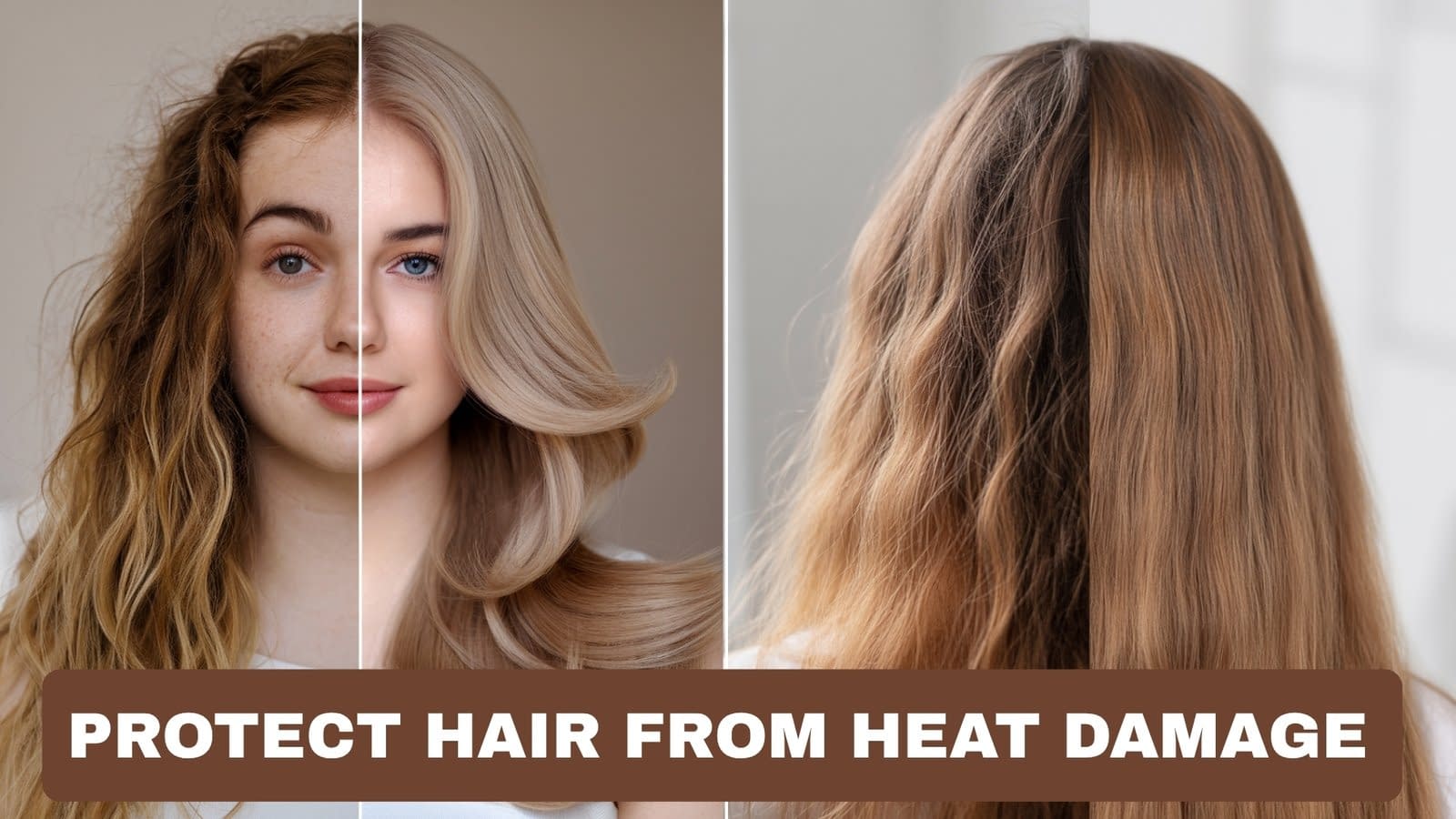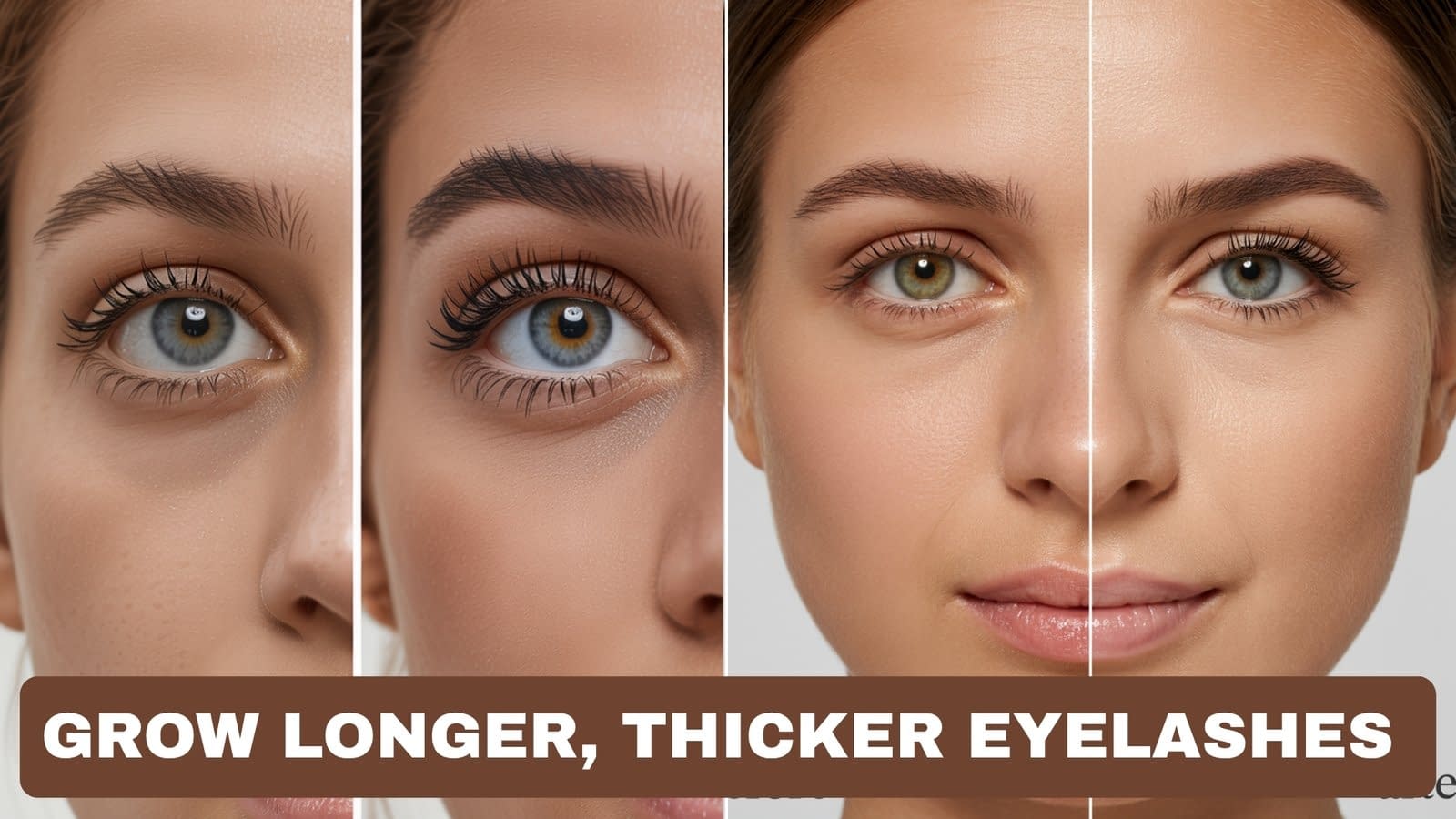Quick reality check: hair growth is slow by nature — average scalp hair grows about 1–1.25 cm (~0.4–0.5 in) per month. You can’t turn that into a racehorse overnight, but you can reduce breakage, speed recovery from damage, and optimize conditions so your hair reaches its genetic potential faster. Follow the steps below consistently and you’ll see real progress in 8–12 weeks.
Understanding Hair Growth: What’s Really Happening Beneath the Scalp
Before you try hacks, know the system. Hair growth happens in cycles and your job is to support that cycle, not fight it.
The basics (short and useful)
- Hair follicle cycle: anagen (growth), catagen (transition), telogen (rest). Scalp hair’s anagen lasts years; other body hair is shorter.
- Growth rate depends on: genetics, hormones, nutrition, scalp health, and age.
- Breakage vs growth: if hair seems “stopped,” often strands are breaking off, not failing to grow. Fix breakage and your length will show.
Practical takeaway
- Focus on scalp health, nutrition, and reducing mechanical/chemical damage. These are things you can control; everything else moves slowly.
Healthy Scalp, Healthy Hair: Start from the Roots

A healthy follicle = stronger, longer hair. Treat the scalp like a garden: clear debris, feed it, and improve circulation.
Step-by-step scalp routine
- Cleanse without stripping: use a gentle, sulfate-free cleanser 1–3× weekly depending on oiliness. Overwashing strips oils and stresses follicles.
- Weekly scalp exfoliation (1× week): use a chemical exfoliant with a BHA (salicylic acid) or a gentle physical scrub to remove buildup and unclog follicles. Don’t overdo it.
- Scalp oil or serum 1–3× week: apply a light oil (jojoba, squalane) or a serums with niacinamide/peptides to nourish. Massage in—massage matters (see next section).
- Avoid heavy product buildup: heavy waxes and silicones can suffocate follicles; if you use them, clarify monthly.
- Treat dandruff or inflammation promptly: medicated shampoos (zinc pyrithione, ketoconazole) when needed — inflammation kills growth potential.
Quick wins
- Use a silk pillowcase or keep hair loose at night to reduce friction that irritates the scalp.
- If you suspect a scalp condition (severe itch, flaking, redness), see a dermatologist.
Nourishing Oils That Boost Growth (Coconut, Castor & More)

Oils don’t make hair magically sprout faster, but they strengthen strands, reduce breakage, and support a healthy scalp.
Oils that help and how to use them
- Coconut oil: penetrates shaft, reduces protein loss. Use as a pre-wash treatment 20–60 minutes before shampoo.
- Castor oil (ricinoleic acid): thick and sticky; used for scalp massages to promote circulation and reduce breakage. Mix with a lighter oil (coconut, jojoba) 1:2 ratio. Leave 30–60 minutes or overnight if tolerated.
- Jojoba oil: closest to scalp sebum; great for light scalp moisturization.
- Argan oil: finishing oil for ends to reduce split ends.
- Rosemary essential oil (diluted): small studies and anecdotal reports suggest rosemary can support hair density. Mix 3–5 drops in 2 tbsp carrier oil; patch test first.
Safe routine (step-by-step)
- Mix castor + jojoba (1:2) or use coconut oil alone. Warm slightly.
- Part hair in sections, apply oil to scalp with fingertips.
- Massage 5–10 minutes (see section 5).
- Leave 30–60 minutes or overnight; shampoo well after.
- Use once weekly to start; adjust frequency based on oiliness and tolerance.
Caveats: avoid leaving heavy oils in if you have clogged follicles or dandruff—use lighter jojoba or dilute well.
DIY Hair Masks for Stronger, Longer Strands
Masks repair porosity, reduce breakage, and add nutrients. Use them 1–2× weekly, not daily.
Effective DIY recipes (with steps)
Protein + moisture mask (balanced — use weekly)
- 1 egg yolk (protein)
- 1 tbsp coconut oil (moisture)
- 1 tbsp yogurt (lactic acid for gentle shine)
- Mix, apply to damp hair (mid-length to ends), avoid roots if oily.
- Leave 20–30 minutes under shower cap.
- Rinse with cool water and shampoo/condition.
Use once every 7–14 days to avoid protein overload.
Castor + coconut strengthening mask (for scalp & ends)
- 1 tbsp castor oil + 2 tbsp coconut oil
- Warm gently, apply to scalp and lengths, massage 5–10 minutes.
- Leave 30–60 minutes or overnight. Shampoo out.
Great for breakage-prone hair.
Avocado + honey deep-moisture mask
- 1 ripe avocado mashed + 1 tbsp honey + 1 tbsp olive oil
- Apply to lengths, 20–30 minutes, rinse/shampoo.
Helps dry, brittle hair recover.
Tips
- Always patch test.
- Don’t use hot water to rinse (opens cuticle and causes frizz); lukewarm then cool rinse is best.
- Rotate masks according to hair needs: moisture vs protein.
Massage Techniques to Stimulate Hair Follicles

Massage increases circulation, reduces stress, and helps topical treatments penetrate. Do it right and do it often.
Scalp massage routine (daily 3–10 minutes)
- Use fingertips, not nails. Sit in front of a mirror or lie back.
- Start at front hairline and make small circular motions with medium pressure, moving toward crown.
- Work from crown to nape for 3–5 minutes. Spend an extra minute on problem spots.
- Finish with tapping around temples and base of skull for lymphatic movement.
- Use oil or a serum to reduce friction (optional).
- Frequency: daily or at least 3–4× weekly. 5–10 minutes works; even 60–90 seconds daily is better than nothing.
Bonus techniques
- Consider a scalp massager tool but avoid aggressive vibrating devices if you have sensitive skin.
- Combine massage with 2–3 drops of rosemary essential oil diluted in a carrier for added benefit—patch test first.
The Right Way to Wash Your Hair Without Damaging It
Shampoo smart: remove buildup but preserve natural lipids and moisture.
Washing routine (step-by-step)
- Frequency: 1–3× per week depending on oiliness, lifestyle, and hair type. Less is often better for growth.
- Use lukewarm water: hot water strips oils and weakens hair.
- Apply shampoo to scalp only: concentrate on roots; let the suds clean the lengths as they rinse down.
- Be gentle: massage with fingertips, not nails. 30–60 seconds is enough.
- Condition mid-length to ends only: avoid the scalp if you’re prone to oiliness. Leave 1–3 minutes then rinse with cool water to seal cuticle.
- Clarify monthly: use a clarifying shampoo once every 2–4 weeks if you use lots of styling products; don’t over-clarify.
Product pointers
- Choose sulfate-free gentle shampoos if hair is dry or color-treated.
- Look for humectants (glycerin), proteins in conditioners if hair is damaged, and avoid heavy silicones that build up unless you clarify.
Trim Smart: How Cutting Split Ends Actually Helps Growth
Cutting hair does not speed follicle growth, but it prevents breakage so you retain length — that’s functionally the same thing.
Trim strategy (step-by-step)
- Trim every 8–12 weeks for most people; every 6–8 weeks if hair is very damaged or you want rapid-looking progress.
- Dust trims vs blunt trims: if you’re growing long, opt for dusting (removing only split ends). If seeking shape, do a small blunt cut.
- DIY caution: home trimming is fine for tiny dustings but professional trims avoid accidental over-cutting.
- Sealing ends: after trimming, use a small amount of oil on ends to protect until the next trim.
Why it helps
- Your hair may be growing normally but ends break; trimming removes weak points so the hair keeps length. Think of it as preventive maintenance.
Eat for Your Hair: Foods That Feed Your Follicles
Topical care is necessary but nutrition is foundational. Hair needs building blocks.
Key nutrients + food sources
- Protein: eggs, fish, poultry, legumes — hair is keratin, a protein.
- Iron / ferritin: red meat, lentils, spinach; low iron is a common hair problem (get tested before supplementing).
- Omega-3 fatty acids: salmon, mackerel, chia seeds — anti-inflammatory and scalp-supporting.
- Zinc: oysters, pumpkin seeds — supports hair repair.
- Vitamin D: oily fish, fortified foods, sun exposure; low levels associate with hair issues (test to confirm).
- Biotin (B7): eggs, nuts — true biotin deficiency is rare; high-dose supplements often unnecessary.
- Vitamin C: oranges, strawberries — helps iron absorption and collagen synthesis for follicles.
Meal plan basics (daily)
- Aim for 3 balanced meals with a source of protein in each.
- Include a handful of seeds or nuts daily.
- Eat colorful vegetables for micronutrients.
- If vegan/vegetarian, watch iron/B12 and consider testing.
Note: don’t megadose supplements without testing — over-supplementation sometimes backfires.
Hydration Habits: Why Water Intake Matters for Hair Health
Hydration supports scalp circulation, skin elasticity, and nutrient transport.
Practical hydration plan
- Aim for consistent fluid intake: typical guideline is 2–3 liters/day depending on body size, climate, and activity. Don’t force it, but sip regularly.
- Eat water-rich foods: cucumbers, watermelon, spinach.
- Limit diuretics at night: heavy alcohol or late caffeine can dehydrate you and disturb sleep, which affects hair repair cycles.
- If you sweat a lot, replace electrolytes sensibly.
Hydration isn’t a miracle but is part of the baseline that allows internal systems to nourish hair more effectively.
Vitamins and Supplements That Can Support Faster Growth

Supplements can help if you’re deficient. They don’t make hair grow faster if you’re already replete.
Supplements to consider (talk to your doc first)
- Iron (if low): check ferritin and hemoglobin before supplementing. Low ferritin can slow growth.
- Vitamin D: test level and supplement if deficient.
- Omega-3 fish oil: may help scalp inflammation and hair density.
- Biotin: useful only for deficiency; otherwise not usually helpful and can skew lab tests.
- Collagen peptides: some people report stronger hair and nails; evidence is modest but low risk for most.
- Multivitamin: if diet is poor, a balanced multivitamin can fill gaps.
Safety checklist
- Always test (bloodwork) before starting targeted supplements like iron and vitamin D.
- Follow dosing recommendations.
- Pregnancy, breastfeeding, and medical conditions require medical supervision.
Heat Styling and Chemical Damage: What to Avoid
Damage is a major limiter of length retention. Avoid predictable culprits.
What to stop or limit
- High heat tools: set straighteners/curlers to the lowest effective temperature (≤ 180°C / 350°F for many hair types). Use a heat protectant every time.
- Frequent bleaching: bleach weakens the hair structure. If you bleach, commit to intensive rebuilding (protein + moisture treatments) and longer trimming intervals.
- Chemical relaxers/perm misuse: follow professional advice and spacing between treatments.
- Tight heat + tight hairstyles combo: heat plus tight elastics = breakage.
Protective approach (step-by-step)
- Air dry when possible. If you must blow dry, use low heat and a diffuser; hold dryer 15–20 cm from hair.
- Use a quality heat protectant (silicone or polymer-based) before heat styling.
- Limit thermal styling to weekends or special occasions while you grow hair.
Protective Hairstyles to Minimize Breakage

Style smarter. Fewer manipulations = less breakage.
Protective styling tips
- Loose buns, low ponytails, braids: use soft hair ties (scrunchies, spiral ties). Avoid tight top knots or repeated ponytail edges that stress hairline.
- Change parting regularly to stop the same areas from rubbing on collars.
- Avoid constant friction: long hair rubbing on collars causes breakage; wear silk scarves or switch to looser collars.
- Don’t keep styles too tight: tension leads to traction alopecia over time.
Night routine
- Wrap or braid hair at night: loose braid prevents tangles.
- Use silk or satin pillowcase to minimize friction.
Sleep on Silk: Pillowcases and Nighttime Hair Care Tips
Friction wrecks hair overnight; silk reduces it.
Night routine (step-by-step)
- Swap cotton for silk/satin pillowcase.
- Tie long hair in a loose braid or pineapple (on top) to reduce friction.
- Apply a small amount of leave-in conditioner or oil to ends if dry (avoid scalp).
- Use a silk scarf/bonnet if you toss a lot during sleep.
The result: fewer tangles, less split-end formation, better length retention.
Stress and Hair Growth: The Hidden Link You Need to Know
Chronic stress disrupts hormones and hair cycle timing — reduce stress and you’ll help your hair.
Stress-reduction methods that actually work
- Sleep: aim for consistent 7–9 hours; sleep is when your body repairs.
- Daily movement: 20–40 minutes of walking or exercise improves circulation and reduces stress hormones.
- Mindfulness practice: 5–15 minutes of breathwork or meditation daily reduces cortisol spikes.
- Social & creative outlets: human connection and hobbies keep stress manageable.
- Professional help: if anxiety is chronic, therapy or medication may be necessary and life-changing.
Practical plan
- Build two simple habits: a 10-minute walk and a 5-minute breathing exercise every day. These have outsized effects without drama.
How to Track Progress and Stay Consistent with Your Routine

Growth is slow. Good tracking keeps you honest and motivated.
Tracking plan (step-by-step)
- Take baseline photos in natural light from three angles (front, left, right) — and repeat every 4 weeks.
- Measure length monthly from a fixed point (e.g., bottom of ear to tip) with a soft tape measure; record in cm.
- Keep a hair log: note products, oil/mask days, trims, and any major diet/sleep changes.
- Set small measurable goals: e.g., “Add 2–3 cm in 6 months” or “Reduce trims to dustings for 12 weeks.”
- Be consistent for 3 months before changing major variables — that’s when you’ll see meaningful trends.
Motivation
- Celebrate maintenance wins too (fewer split ends, softer texture). Growth is retention + new growth; both count.
Final Words
If you want faster hair growth, stop looking for magic potions and build a system that reduces breakage and supports follicles: healthy scalp care, targeted nutrition, gentle handling, smart trims, protective styling, and low-heat styling only. Add a weekly massage, a mask or two, and consistent tracking. Expect measurable improvements in 8–12 weeks and remember: most gains come from stopping damage, not pushing growth unrealistically.
Pick three daily habits from this plan (scalp massage, protein-balanced meals, and nightly silk pillowcase), do them consistently for 12 weeks, and you’ll see proof that your hair can do better — without hype, without empty promises.








